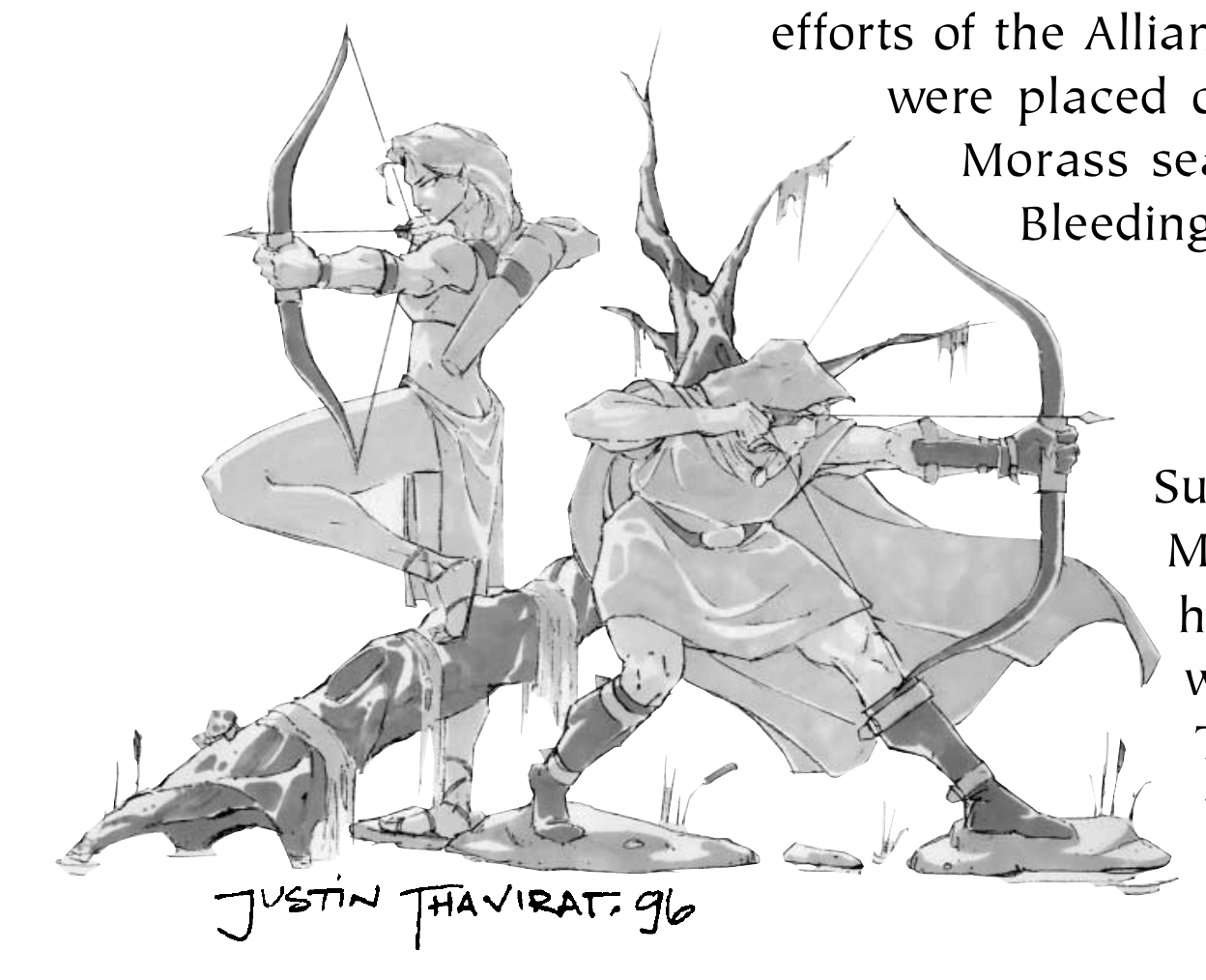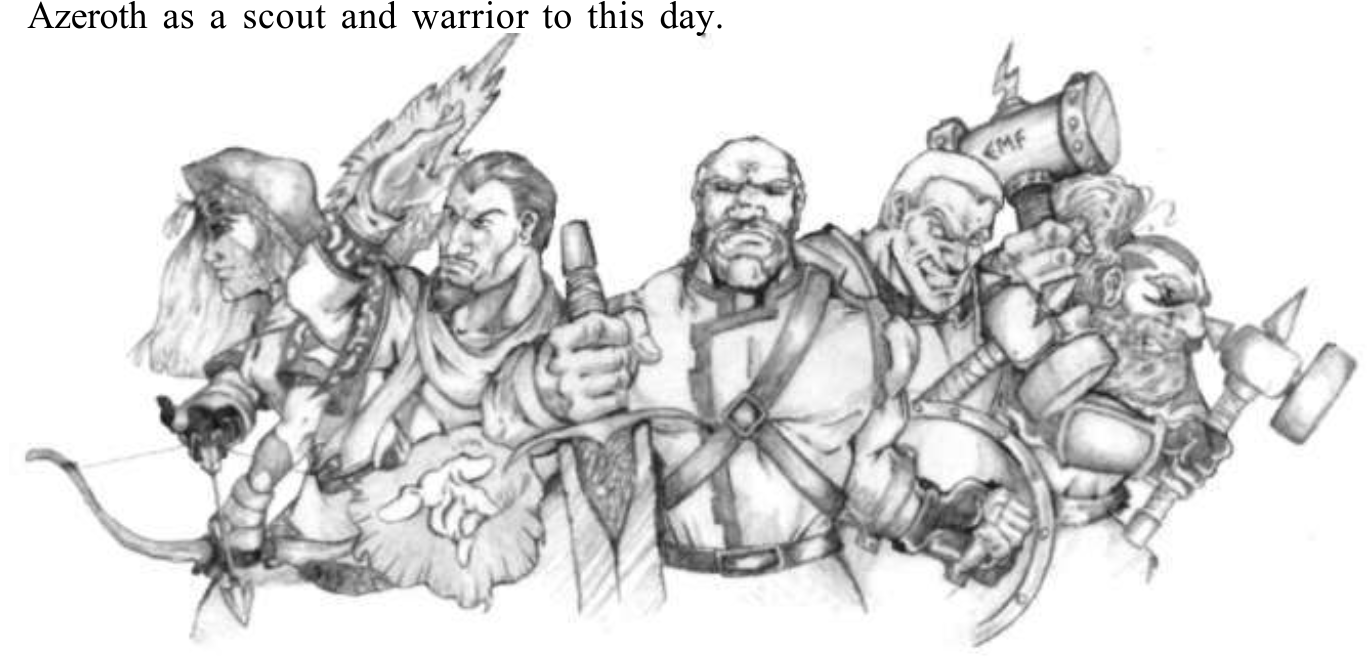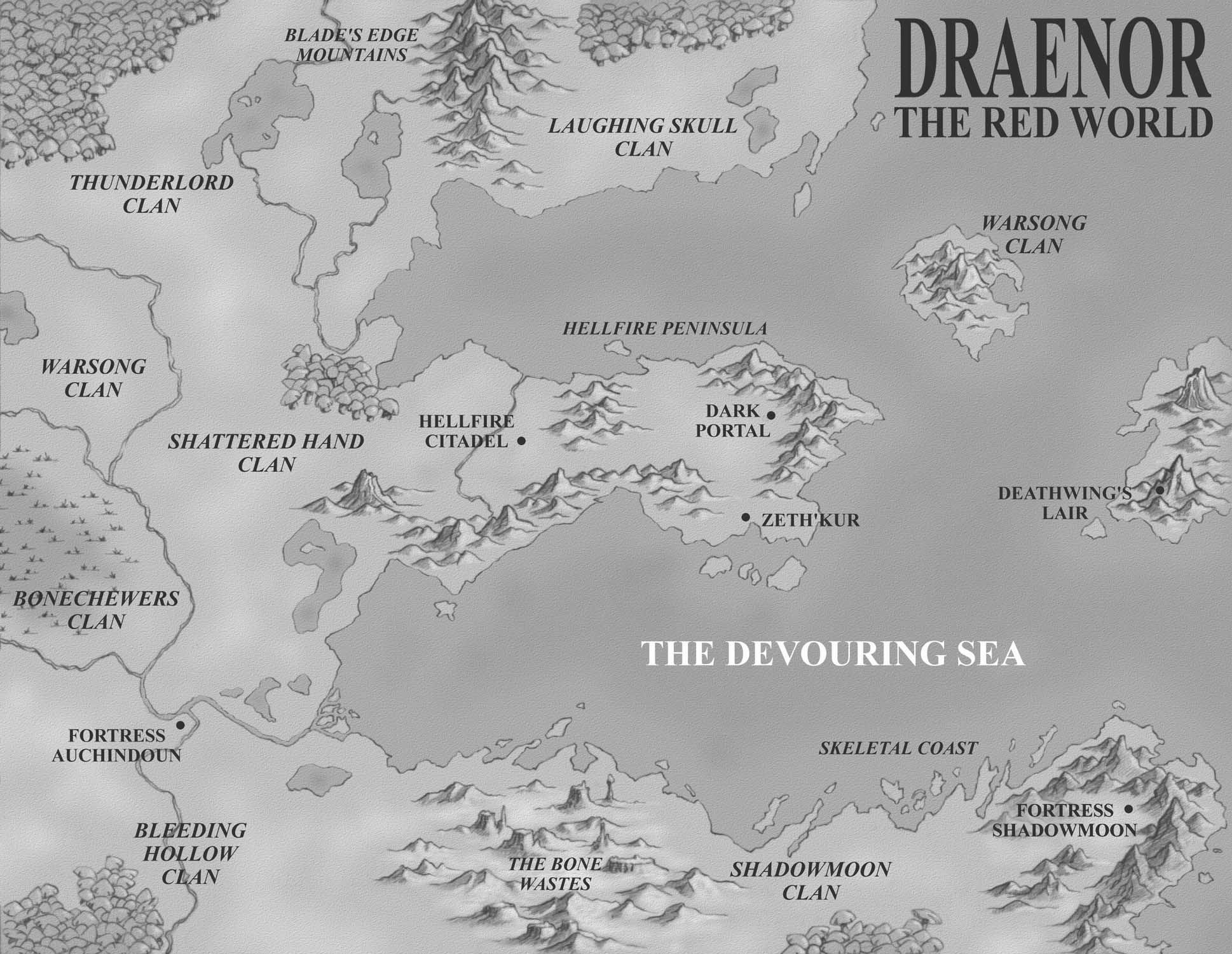Warcraft Retrospective 8: Beyond the Dark Portal, the Manual
Beyond the Dark Portal is the first expansion pack ever released for a Blizzard game, and is in many ways an unusual one. For one, it doesn’t change the gameplay at all, introducing no new units1, buildings, or mechanics. It only adds two new campaigns, one per faction, and several multiplayer maps.
For two, it was the first and, to my knowledge, last time2 Blizzard tried to outsource one of their games to a different company. It was entrusted to Cyberlore Studios, but Blizzard wasn’t happy with the halfway result and finished the expansion themselves. All future expansions for Warcraft games were produced entirely in-house.
Since there is no new gameplay to cover, I will focus exclusively on the story. Beyond the Dark Portal is an expansion to Warcraft 2 that takes the players, unsurprisingly, beyond the Dark Portal, focusing on the orc homeworld and serving as a sequel to the “what if the orcs lost?” ending — in a timeline where they eventually lost after nearly conquering the entire continent.
The Orc Problem

In hindsight, the decision of the Warcraft 1 writers to have the orcs come from a different world was a fortunate one. It gave them an identity beyond being generic D&D-style barbaric orcs: they were alien invaders! It immediately created a mystery of what exactly was on the other side of the portal, and gave them an in-story reason to remain strong even if their invasion was thwarted and they were hunted to extinction — leaving the implications of genocide aside.
The topic of genocide by necessity raises its ugly head when a “monster race” serves as antagonists and is soundly defeated. What should the protagonists do with the remaining ones? The Lord of the Rings sidesteps this question entirely; all orcs encountered in the story are combatants who get killed in self-defense (or kill each other in feuds), and after Sauron’s defeat, the remainder of the story focuses on the protagonists and has little to say about about the fate of the remaining orcs, only mentioning that they scattered or slew themselves. Supplemental texts clarify that elves and their allies didn’t kill defenseless prisoners, even if they were orcs.
Modern Warcraft orcs (from Warcraft 3 onwards) have diverged from Tolkien’s creation so much, both visually and thematically, that I believe it’s best to think of them as completely different beings who just happen to be named the same. Nonetheless, even in Warcraft 2, which features no sympathetic orc characters, the orcs aren’t just an evil overlord’s horde of interchangeable mooks; they are people, with agency. Unlike Tolkien’s orcs, they actually have a culture of their own; they are already noted to have shamanistic traditions in the Warcraft 2 manual, and worship their ancestors.
For these reasons, I’m glad that the writers of Beyond the Dark Portal actually gave some thought to the question of “what do we do with the seemingly universally evil horde that just tried to conquer us” — as we discover in the first section of the manual, which is titled…
The Aftermath of the Second War

The Beyond the Dark Portal manual is fairly short compared to the original game, and doesn’t feature as much new lore. Originally it was a separate manual, but in Battle.net Edition, the two manuals were combined into one, with different formatting but unchanged text. Unfortunately, some illustrations are only found in the original separate manual, not the combined one.
Here’s the gist of it. The Second War — the events of Tides of Darkness — ended with the Horde defeated and the Dark Portal destroyed, but the Stormreaver and Twilight’s Hammer clans are said to have been decimated3 by their own brethren in a civil war. This implies that Beyond the Dark Portal is a sequel to the human campaign, but some events from the orc campaign, namely Doomhammer going after Gul’dan and his renegade clans, are still part of this continuity.
After the war ended, the Alliance leadership was in disagreement about what to do with the captive orcs. Some, including Thoras Trollbane of Stromgarde and Genn Greymane of Gilneas, believed the orcs were too great a threat to be left alive, and wanted them exterminated. King Terenas of Lordaeron disagreed and put the orcs into prison camps instead, hoping that they can eventually turn away from their violent ways, while keeping Orgrim Doomhammer as his honored prisoner.
Because of this, Stromgarde and Gilneas withdrew their support from the Alliance.4 Only the Kingdom of Azeroth with its young king Varien Wrynn [sic] remained an ally of Lordaeron, but the distance between them wasn’t of much help.
Finally, the Kirin Tor of Dalaran constructed the Citadel of Nethergarde at the site of the former Dark Portal to watch over the dimensional rift between the two worlds that remained despite the physical Portal being destroyed. One day, under the cover of magical darkness, Kilrogg Deadeye evaded the Kirin Tor’s vigil and led the Bleeding Hollow clan, hundreds strong, back through the rift, reuniting with the clans back home, now under the command of Elder Shaman Ner’zhul. They only left an ominous message behind: We will return.
We finally get the name of the orc homeworld: Draenor. Hmm. We previously learned that the orcs conquered and exterminated the draenei. I sure wonder if there’s any relation, though it’s odd that the orcs took the name of their world from the people Gul’dan found weak and “hardly worth the effort”.
Anyway, Ner’zhul has a plan — one that involves stealing artifacts from Azeroth to open rifts to new worlds for the Horde to conquer. In the two campaigns to follow, we’ll see what becomes of it.
Legends of the Land

This section introduces five characters each for the Alliance and the Horde. To me, it’s not as interesting what their biographies mention as what they don’t mention.
- Khadgar made a name for himself serving the Kingdom of Azeroth during the First War. (Really? I don’t recall him ever appearing in Warcraft 1?) He discussed the possible origins of the Dark Portal with the Kirin Tor and now oversees the study of its remains. Though his portrait is blatantly of the mage who destroyed the Dark Portal in the human victory cinematic of Tides of Darkness, it’s never mentioned in the manual that he destroyed it.
- Alleria is an elven ranger of Quel’Thalas who hates the orcs and is now hunting the Bleeding Hollow clan, and that’s about it. Her surname isn’t mentioned.
- Danath is a Stromgarde mercenary captain and hero of the Second War turned overseer over the orc camps at New Stormwind. This is the first mention that there is a New Stormwind. Danath’s surname isn’t mentioned either.
- Turalyon is a former knight of Lordaeron trained as a paladin by Uther. He was among Lothar’s entourage during the ambush at Blackrock Spire and regrets not saving him.
- Kurdran is also a hero of the Second War, a dwarven rider who slew nine dragons atop his gryphon Sky’rie [sic]. His surname is — you guessed it — not mentioned either.
All these characters and the group they belong to will later become vastly important to the overall setting. Some more than others.
On the Horde side, we have:
- Grom Hellscream, the battle-thirsting chieftain of the Warsong clan.
- Kargath Bladefist, the ruthless chieftain of the Shattered Hand clan.
- Teron Gorefind, the cunning death knight who wants to open his own portal to a world to conquer.
- Dentarg, the ogre-mage servant and enforcer to Ner’zhul in the Shadow Moon clan.
- Deathwing, a black dragon covered in adamantine scales made by goblin alchemists during the Second War and said to be second in power only to Alexstrasza herself. Now he resides in northwestern Draenor with a group of renegade dragons.
Yes, one of these things is not like the others, and already it presents a minor continuity issue. Deathwing is blatantly there to explain why the Draenor Horde still has access to dragons despite not having the Dragonmaw clan and the captive Alexstrasza. However, if goblin alchemists made Deathwing nearly impenetrable armor in the Second War, presumably for the needs of Doomhammer’s Horde, why didn’t Doomhammer, you know, use him? A nigh-invulnerable dragon would be a great asset in the conquest of Lordaeron or in pursuit of Gul’dan and his renegade clans.
Let’s hope that the campaigns explain why he moved to Draenor, and let’s hope that no future retcons make his lore even more perplexing!
Clans of Draenor
Since the clans of Doomhammer’s Horde were defeated in the Second War, we need a new roster of the obligatory seven colors for the campaigns. And so we have:
- The Shadow Moon clan (black), dark shamans led by Ner’zhul.
- The Warsong clan (red), warriors “crying epic battle-hymns of blood and death”, led by Grom Hellscream.
- The Shattered Hand clan (white), who, like the Black Tooth Grin clan, engage in self-mutilation to demonstrate loyalty to their clan. Except these guys are even more drastic, breaking or removing their left hands and often replacing them with weapons or tools. Led by Kargath Bladefist.
- The Bleeding Hollow clan (orange), the same one from the Second War, still led by Kilrogg Deadeye.
- The Thunderlord clan (violet), which is the clan Orgrim Doomhammer originally rose through before overthrowing Blackhand in Warcraft 1. Led by Fenris the Hunter, captain of the remaining wolfriders.
- The Laughing Skull clan (yellow), treacherous and distrusted by fellow orcs. Led, bizarrely, by Mogor the Ogre.5
- The Bonechewer clan (green), cannibals who wear the bones and organs of their enemies. Led by Tagar Spinebreaker.
The manual ends with a map of Draenor — for the first time in the series.

I like this map. It creates a sense of scale by showing a large landmass for the orcs to invade from. All remaining clans have their location shown. Finally, the geography of this part of Draenor hasn’t since been retconned too badly, even if the details have changed a lot.
But still, when I look at this map, I can’t help but wonder what could have been. The E-shaped coast seen here is implied to be only a small part of a larger continent extending to the north, west, and south for who knows how long. When I first saw this map, I wondered what was there off the map, in the uncharted parts of the world.
And then Warlords of Draenor came out, and the answer turned out to be “not much”.
But all in due time. Next up: Ner’zhul’s artifact heist!
-
Except for hero units in campaigns, a mechanic that I’ll cover separately. ↩
-
Diablo: Hellfire was outsourced, but it was a decision made by the parent company against Blizzard’s will. ↩
-
The wrong word, but I fear that at this point it’s easier to accept the new consensus definition than to cling to the old one of “killing every tenth member”. ↩
-
Not that Gilneas was exactly of help in the Second War, either. It appears in exactly zero Tides of Darkness missions. ↩
-
No later lore mentions Mogor being in any way involved with the Laughing Skull clan besides occupying their ruins, making it unclear who was supposed to lead it. ↩
Leave a Comment